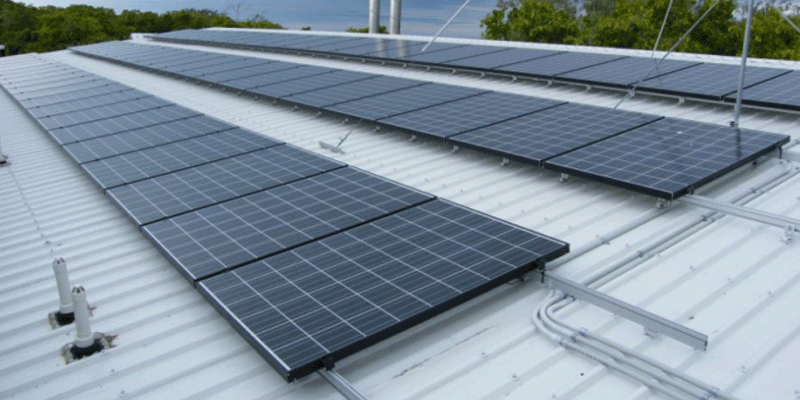During the installation process of distributed waterproof solar panel roof mounts systems, ensuring waterproofing is crucial. Supported by strong policies from national and local governments, the distributed photovoltaic power generation system has developed rapidly, becoming one of the key directions for future energy development. However, as the distributed photovoltaic market is still in its introductory phase, the design and construction quality vary significantly, and roof waterproofing issues are often overlooked. If the waterproof layer is damaged during installation or lacks proper treatment, leakage may occur, affecting the operation of the PV system and posing potential risks to the normal use of the building. Therefore, exploring the waterproofing of photovoltaic roofs is especially important. This can be achieved by understanding roof design principles and incorporating appropriate waterproofing treatments based on the different installation methods of roof support brackets.
General Principles for Roof Waterproofing
The principle followed in roof waterproofing is “drainage is preferred over blockage,” meaning that the node treatment should allow rapid drainage during heavy rain and prevent water leakage. For areas where drilling is necessary and the original roof is penetrated, treatment should be tailored to the specific situation. The following are waterproofing methods for different types of roofs:
Waterproofing Solution for Concrete Flat Roofs
For newly built concrete flat roofs, bolts should be embedded during the design phase, and conventional waterproofing methods should be employed. For existing buildings, when setting up PV module bases, the waterproofing layer should be laid over the base and the metal embedded parts, with sealing treatment around the anchor bolts. Any areas where the waterproofing layer is penetrated should be filled with waterproof sealant, and an additional waterproofing layer can be added beneath the base. Even if the base top leaks, rainwater will not reach the structural layer, ensuring overall waterproofing performance.

Usage and Precautions for Chemical Anchoring Bolts
For existing concrete flat roofs, if chemical anchoring bolts are used to fix the supports, the thickness of the protective layer or surface layer must be confirmed. On prefabricated concrete roofs with heavy load-bearing requirements, a concrete layer of sufficient thickness can be poured, and after curing, chemical anchoring bolts can be used to secure the supports.
For pitched roofs with tiles, the drilling depth must be confirmed, and ,sealant should be used to seal the area where the bolts pass through the tiles. Chemical anchoring bolts have advantages such as strong bearing capacity, fatigue resistance, and aging resistance. They do not exert expansion force on the base material, so they will not negatively affect the roof waterproofing.
Waterproofing Solutions for Metal Roofs
When installing PV systems on metal roofs, the steel structure needs to penetrate the original waterproof layer and corrugated steel plates, being fixed to the building’s main steel structure. Afterward, the waterproofing method for metal roofs should be followed, including steps like vapor barrier, insulation, and waterproof construction. Key steps include:
- Removing rust and applying waterproof coatings.
- Using high-quality neutral weather-resistant sealant to seal localized leaks.
- Replacing severely rusted color steel plates before installing PV modules.

Conclusion:
The design of PV module installation needs to consider not only factors such as sunlight and shading but also load-bearing, drainage, and waterproofing, all of which are key aspects. Proper waterproofing design and construction can significantly improve the stability and longevity of PV systems.
As a company specializing in waterproof solar panel mounts system research and manufacturing, Leon Solar has significant advantages in waterproofing technology and bracket design. Leon Solar not only provides high-quality brackets suitable for various roof environments but also offers customized solutions to meet customer needs, ensuring that the brackets maintain installation convenience and waterproof performance under various complex conditions. The company employs advanced materials and manufacturing processes, ensuring the durability and adaptability of its bracket products, while also focusing on environmental protection and efficient construction with minimal impact on the roof.
In the future, Leon Solar will continue to drive the development of the distributed photovoltaic industry with excellent product quality and service, contributing more to the sustainable use of clean energy.
